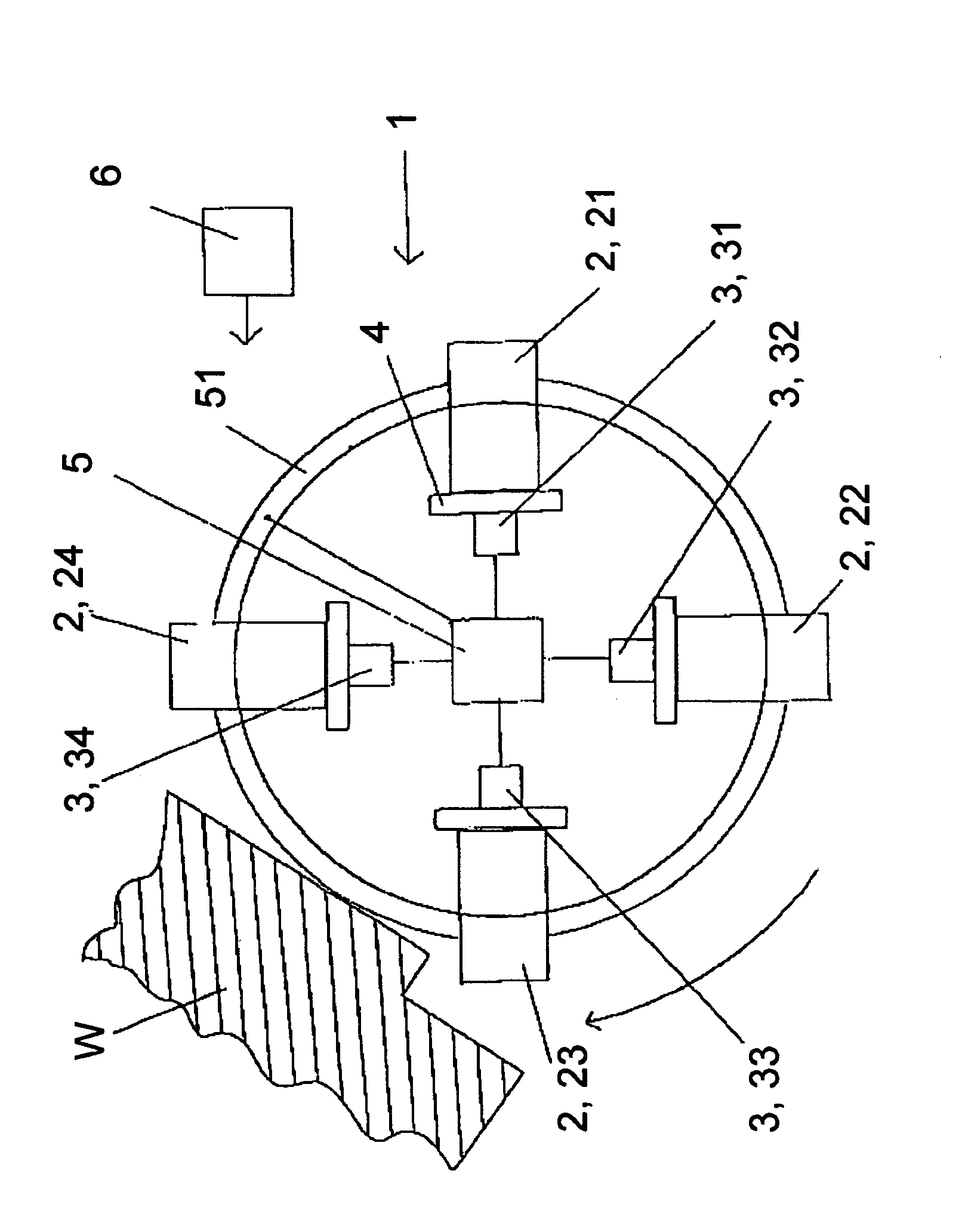Tool condition monitoring system
a condition monitoring and tool technology, applied in the field of tools, can solve the problems of difficult correct control and/or regulation of the tool operating condition, uncritical operating parameters of another blade of the same cutting tool, and high risk
- Summary
- Abstract
- Description
- Claims
- Application Information
AI Technical Summary
Benefits of technology
Problems solved by technology
Method used
Image
Examples
Embodiment Construction
[0030]FIG. 1 shows a tool according to the invention in a schematic illustration in form of a blade front cutting head with single blade force measurement, which tool in the following is indicated entirely by the reference numeral 1.
[0031]The blade front cutting head 1 rotating in operation is schematically illustrated in FIG. 1 in operating condition, wherein the blade front cutting head 1 processes a surface of a work piece W, by cutting material of a given thickness at the surface of work piece W. In the particular embodiment of FIG. 1 four tool elements 2, 21, 22, 23, 24 are provided at the blade front cutting head 1 in the form of four geometrically defined cutting plates 2, 21, 22, 23, 24, which process the work piece W at its surface in a cutting manner. Each of the four cutting plates 2, 21, 22, 23, 24 is coupled via a coupling element 4 formed as an intermediate disk 4 to an assigned measuring device 3, 31, 32, 33, 34 each, by which measuring device 3, 31, 32, 33, 34 an ope...
PUM
| Property | Measurement | Unit |
|---|---|---|
| resonant frequency | aaaaa | aaaaa |
| weight | aaaaa | aaaaa |
| pressure | aaaaa | aaaaa |
Abstract
Description
Claims
Application Information
 Login to View More
Login to View More - R&D
- Intellectual Property
- Life Sciences
- Materials
- Tech Scout
- Unparalleled Data Quality
- Higher Quality Content
- 60% Fewer Hallucinations
Browse by: Latest US Patents, China's latest patents, Technical Efficacy Thesaurus, Application Domain, Technology Topic, Popular Technical Reports.
© 2025 PatSnap. All rights reserved.Legal|Privacy policy|Modern Slavery Act Transparency Statement|Sitemap|About US| Contact US: help@patsnap.com


